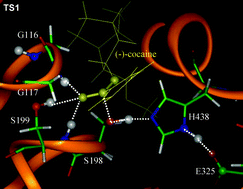Structure-and-mechanism-based design and discovery of therapeutics for cocaine overdose and addiction
Abstract
(−)-Cocaine is a widely abused drug and there is currently no available anti-cocaine therapeutic. Promising agents, such as anti-cocaine catalytic antibodies and high-activity mutants of human


 Please wait while we load your content...
Please wait while we load your content...